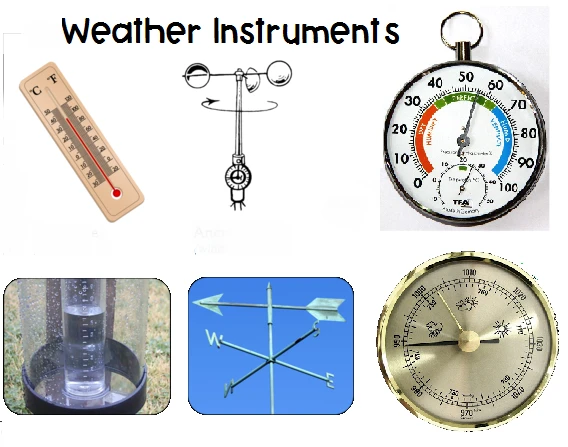
# Weather Gauges and Instruments for Accurate Meteorological Measurements
## Introduction to Weather Gauges and Instruments
Weather gauges and instruments play a crucial role in meteorological measurements. These tools help scientists, researchers, and weather enthusiasts collect accurate data about atmospheric conditions. From simple thermometers to sophisticated weather stations, these instruments provide valuable information for weather forecasting, climate studies, and environmental monitoring.
## Essential Weather Measurement Tools
### Thermometers: Measuring Temperature
Thermometers are fundamental instruments for measuring air temperature. Modern digital thermometers provide precise readings, while traditional mercury or alcohol thermometers remain reliable options. Some advanced models can record minimum and maximum temperatures over specific periods.
### Barometers: Tracking Atmospheric Pressure
Barometers measure atmospheric pressure, which is essential for weather prediction. Mercury barometers were historically common, but today’s aneroid barometers and digital barometers offer more convenience and portability. Changes in atmospheric pressure often indicate approaching weather systems.
### Hygrometers: Measuring Humidity Levels
Hygrometers determine the amount of moisture in the air. Psychrometers (wet-and-dry bulb thermometers) and electronic hygrometers are widely used. Accurate humidity measurements are crucial for understanding comfort levels, predicting precipitation, and studying climate patterns.
## Advanced Meteorological Instruments
### Anemometers: Wind Speed and Direction
Anemometers measure wind speed, while wind vanes determine wind direction. Cup anemometers and propeller anemometers are common types, with ultrasonic anemometers providing the most accurate measurements without moving parts.
### Rain Gauges: Precipitation Measurement
Rain gauges collect and measure liquid precipitation. Standard cylindrical gauges are simple yet effective, while tipping bucket rain gauges provide automated measurements. Some advanced models can differentiate between rain, snow, and hail.
### Pyranometers: Solar Radiation Measurement
Pyranometers measure solar radiation flux density (W/m²) on a planar surface. These instruments are essential for studying solar energy potential, agricultural applications, and climate research.
## Weather Stations: Comprehensive Measurement Systems
Modern weather stations combine multiple instruments into integrated systems. These may include:
– Temperature and humidity sensors
– Barometric pressure sensors
– Anemometers and wind vanes
– Rain gauges
– Solar radiation sensors
– Soil moisture and temperature probes
Automatic weather stations can transmit data in real-time, making them valuable for meteorologists and researchers.
## Choosing the Right Weather Instruments
When selecting weather gauges and instruments, consider:
– Accuracy requirements
– Measurement range
– Durability and weather resistance
– Maintenance needs
– Data recording capabilities
– Power requirements
– Budget constraints
Professional meteorological organizations typically use high-precision instruments that meet international standards, while hobbyists may opt for more affordable consumer-grade options.
## The Importance of Proper Instrument Placement
Accurate measurements depend on proper instrument placement:
– Thermometers should be shielded from direct sunlight and placed at standard heights (typically 1.25-2 meters above ground)
– Rain gauges should be positioned in open areas, away from obstructions
– Anemometers should be mounted at standard heights (usually 10 meters) above ground level
– All instruments should be placed away from heat sources, buildings, and trees that could affect readings
## Maintenance and Calibration
Regular maintenance ensures accurate measurements:
– Clean instruments periodically
– Check for damage or wear
– Calibrate according to manufacturer recommendations
– Replace batteries in electronic devices
– Verify readings against known standards
Proper maintenance extends instrument lifespan and maintains data quality.
## Future Trends in Weather Instrumentation
Emerging technologies are transforming meteorological measurements:
– Miniaturized sensors for portable applications
– Wireless and IoT-enabled devices
– Improved data logging and transmission capabilities
– Enhanced durability for extreme conditions
– Integration with satellite and radar data
These advancements promise more comprehensive and accessible weather data collection in the future.
## Conclusion
Weather gauges and instruments form the foundation of meteorological science. From basic temperature measurements to comprehensive weather station systems
Keyword: weather gauges instruments